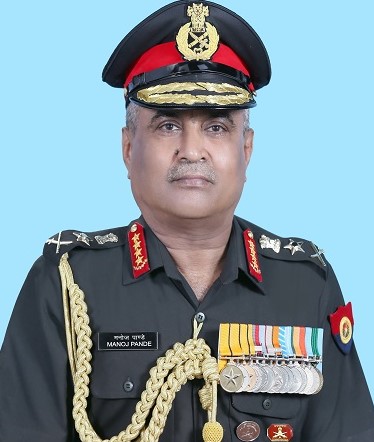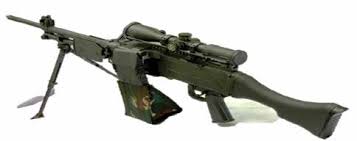Iran attacked Israel with hundreds of drones and missiles on April 14, 2024 in retaliation for Israel targeting its consulate and military generals in Syria earlier this month.
While Israel is not believed to have suffered any major damage early on, Iran warned that a military move from Israel would be met with a “much larger response”.
Worries over a larger regional conflict in the Middle East have been raised ever since the Palestinian militant group Hamas attacked Israel on October 7, 2023.
Israel has accused Iran of sponsoring Hamas and several other regional militant groups that are opposed to Israel and the United States.
On the other hand, Iran has criticised Israel’s military offensive in the Gaza Strip, where more than 32,000 people have been killed so far, a majority being women and children.
Now that the spectre of a larger conflict looms in the region, questions are being raised about what Iran’s military capabilities look like at the moment.
First, what is the spread of Iran-backed groups?
Militant groups such as Hezbollah in Lebanon and Hamas in the Gaza Strip have received Iranian support for their activities for years.
Some experts believe that funding such groups spread across the region, helps Iran engage in security and intelligence operations and maintain deniability, ultimately helping the regime safeguard itself.
Each of these groups has thousands of members.
Their intentions differ in terms of their local and more direct aims, such as Hamas primarily opposing Israel in the Gaza Strip and the Sunni Houthis in Yemen being involved in a civil war with the country’s religious minority, the Shia Zaidis.
However, beyond these region-specific concerns, all of them are opposed to Israel and the larger US presence in the region.
What about the Iranian military?
Analysts say the Iranian military has more than 500,000 active members. Another 200,000 reserve personnel are divided among the army and the Islamic Revolutionary Guards Corps (IRGC), according to an analysis from The New York Times.
The IRGC was formed in the wake of the Islamic Revolution of Iran in 1979, when Muslim students led a movement to remove the US-backed Pahlavi dynasty from power. It was formed as an organisation to protect the new regime.
It is a 125,000-strong force with ground, naval, and air wings, tasked with internal and border security, law enforcement, and protection of Iran’s missiles.
In 2019, the US government designated it as a terrorist group.
Its National Counterterrorism Center website says, “The IRGC-QF is one of the Iranian regime’s primary organizations responsible for conducting covert lethal activities outside of Iran, including asymmetric and terrorist operations.
Iran views terrorism as a tool that it can use to support its efforts to deter and counter its perceived foes, assert leadership over Shia Muslims worldwide, and project power in the Middle East.”
The IRGC further controls the Basij militia, a semi-government paramilitary force estimated to have up to a million active members.
The elite Quds Force or Quds Corps is the paramilitary and intelligence wing of the IRGC, reporting directly to Iran’s Supreme Leader, Ayatollah Ali Khamenei.
It is involved in coordinating action with the various Iran-backed proxy groups abroad. Senior commanders of the Quds Force were killed in the April 2 strikes on Iran’s consulate in Damascus.
What are Iran’s missile and drone capabilities?
Afshon Ostovar, an associate professor of national security affairs at the US Naval Postgraduate School, told The NYT that “Iran has one of the largest arsenals of ballistic missiles and drones in the Middle East.”
“That includes cruise missiles and anti-ship missiles, as well as ballistic missiles with ranges up to 2,000 kilometers, or more than 1,200 miles. These have the capacity and range to hit any target in the Middle East, including Israel,” the report said.
According to the BBC, Sunday’s attack included “170 drones and 30 cruise missiles, none of which entered Israeli territory, and 110 ballistic missiles of which a small number reached Israel,” citing Israeli military spokesman Rear Admiral Daniel Hagari.
It noted that the shortest distance from Iran to Israel is about 1,000km (620 miles) across Iraq, Syria and Jordan.
Additionally, Iran is a major producer of drones, Reuters reported.
“In August it had built an advanced homemade drone named Mohajer-10 with an operational range of 2,000 km (1,240 miles) and capable of flying for up to 24 hours with a payload of up to 300 kg (660 pounds),” it added.
How do other countries see Iran’s military, and what are its weaknesses?
Iran’s military is viewed as one of the strongest in the region in terms of equipment, cohesion, experience and quality of personnel, but it lags far behind the power and sophistication of the armed forces of the United States, Israel and some European countries, experts said.
Iran’s greatest weakness is its air force. Much of the country’s aircraft date from the era of Shah Mohammed Reza Pahlavi, who led Iran from 1941 to 1979, and many have been disabled for lack of spare parts.
The country also bought a small fleet from Russia in the 1990s, experts said.
Iran’s tanks and armored vehicles are old, and the country has only a few large naval vessels, experts said.
Two intelligence gathering vessels, the Saviz and Behshad, deployed on the Red Sea, have aided the Houthis in identifying Israeli-owned ships for attacks, U.S. officials have said.




